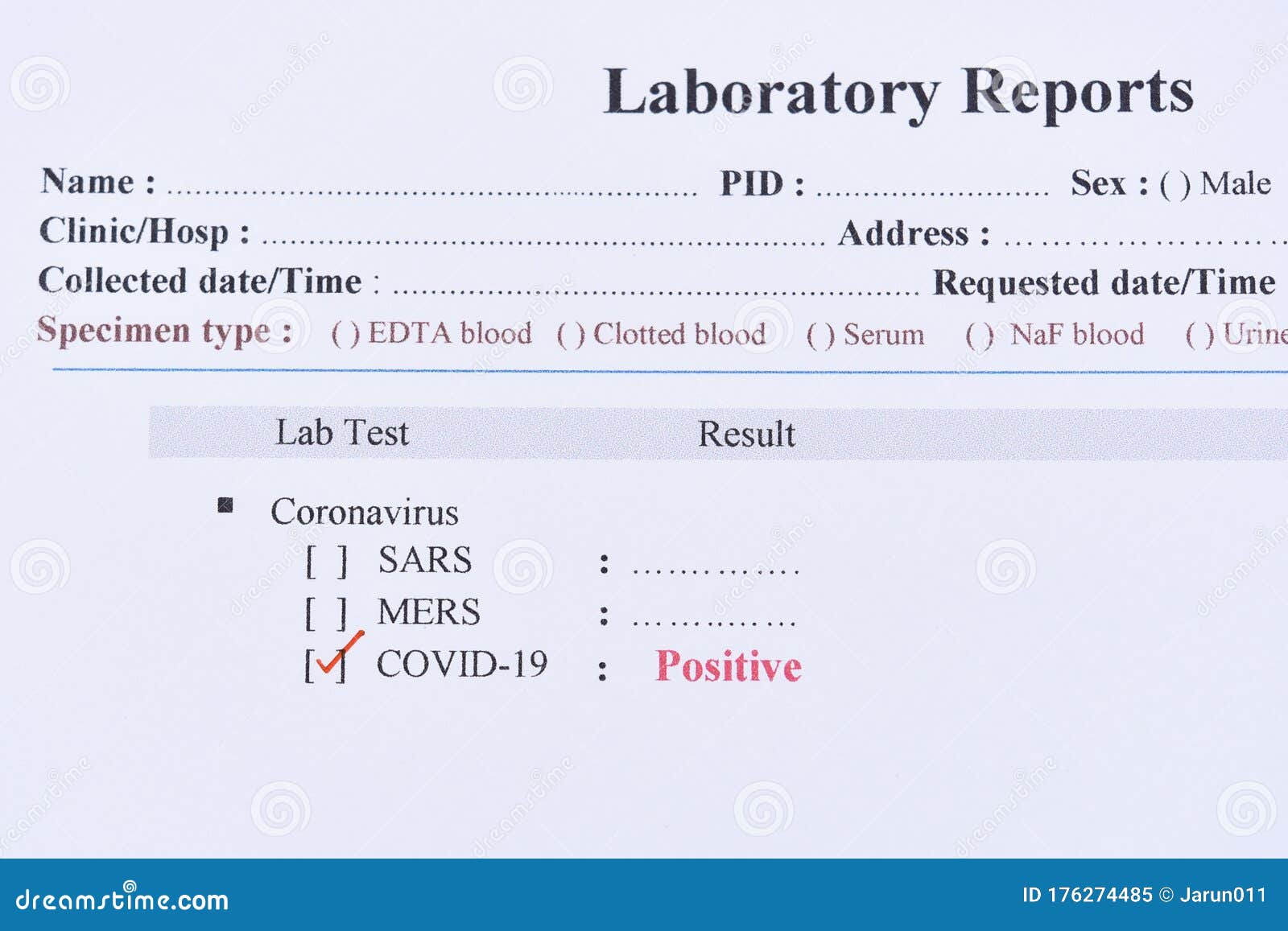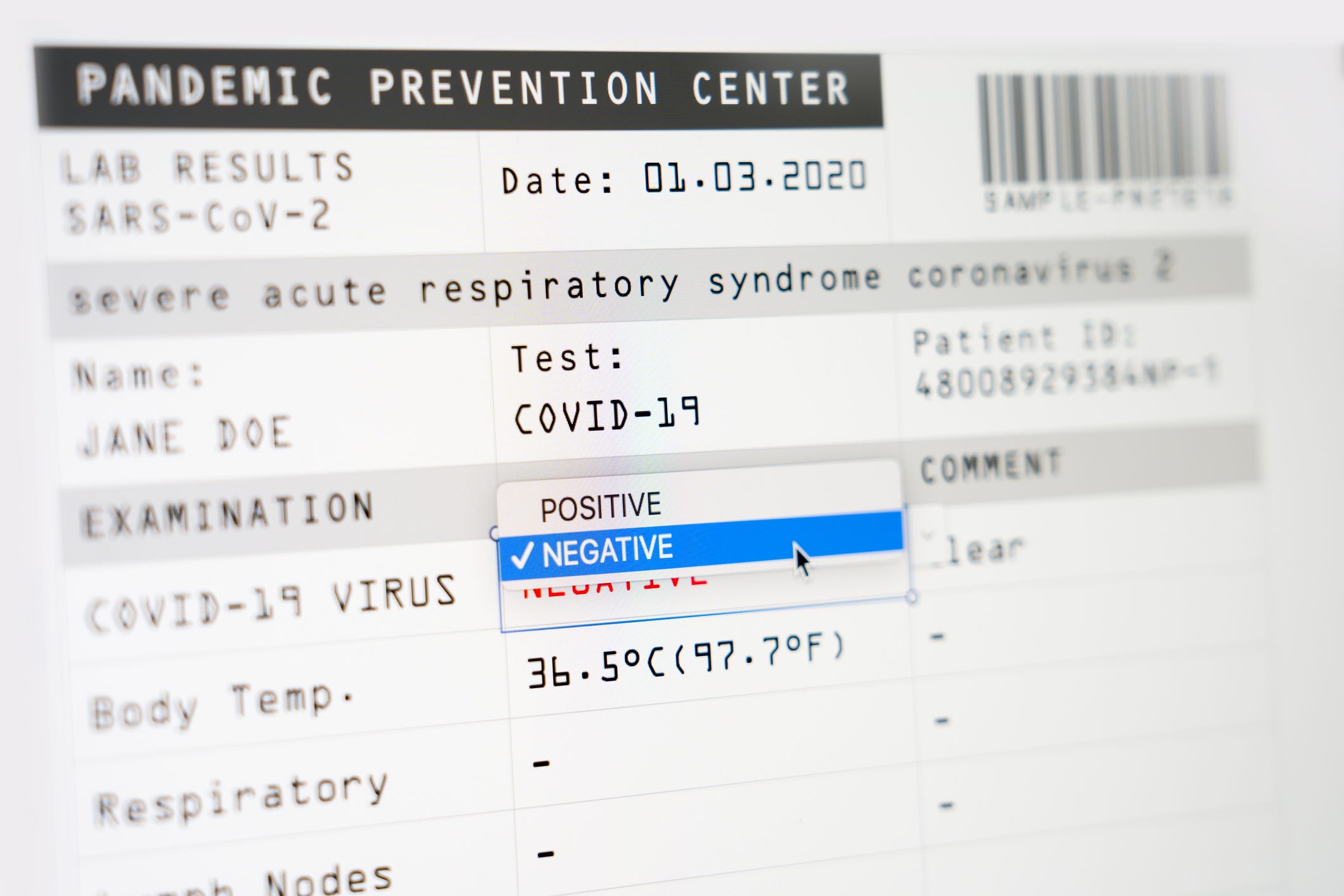


#Sample negative covid test results professional
A health care professional collects a fluid sample by inserting a long nasal swab (nasopharyngeal swab) into your nostril and taking fluid from the back of your nose. Also called a molecular test, this COVID-19 test detects genetic material of the virus using a lab technique called reverse transcription polymerase chain reaction (RT-PCR). Let's add a bit of perspective to this.RT-PCR test. I'm sure this virus isn't pleasant to deal with at home. as in people that have to be admitted to the hospital or into ICU because of this virus and quit trying to scare the rest of the public into thinking that this virus is some world-ending "Captain Trips" virus. But what would happen if we spent less time focusing on active-virus testing and more time on research and development of a reliable antibodies test?Ĭan't do a reliable antibodies test? Then let's start focusing on the number of active cases that are really bad. I definitely understand that there's no real reliable antibodies test out there. This is why the calls for widespread active-virus testing is a real head scratcher for me. Drive down the road a bit, go in the grocery store, and get infected then.

Someone can drive up to a testing facility get tested, be negative at that moment. The problem with the active, molecular, cotton swab up your nose test is even if you test negative. Going viral: 6 new findings about viruses."Testing may be falsely negative if the test is obtained too early or too late compared to infection, or if the sample isn’t obtained or processed correctly." "No test detects every case and there is no current 'gold standard' to compare to," he wrote. Larry Madoff, medical director of the Bureau of Infectious Disease at the Massachusetts Department of Public Health, wrote in a statement, according to the Globe. Centers for Disease Control and Prevention are highly sensitive to the coronavirus, Dr. That said, no diagnostic test provides accurate results 100% of the time, and the tests developed by the U.S. "If you have had likely exposures and symptoms suggest Covid-19 infection, you probably have it - even if your test is negative." "For now, we should assume that anyone could be carrying the virus," Krumholz wrote. Richard Ellison told the Globe that the hospital is now retesting patients who received a negative test but have symptoms of the novel coronavirus, in an attempt to cut down on false negatives. At UMass Memorial Medical Center in Worcester, epidemiologist Dr. Krumholz shared a similar sentiment in the Times. If false-negative results prove fairly common, what should people do if they receive one?Ĭhaoui told The Boston Globe that he is advising all his patients who test negative for the virus to assume they are infected, regardless, and quarantine themselves until they are symptom-free for at least 72 hours. In addition, the standard nasopharyngeal swab, wherein a long instrument is wriggled and rotated to the very back of the nasal cavity, can be both difficult for clinicians to perform and uncomfortable for patients to endure, Krumholz wrote.Īlternatively, false-negative results may result from how tests are processed in the laboratory or what specific chemicals are applied to each sample, Krumholz noted. This problem may arise more often in patients who do not show many symptoms at the time of their test, the Globe reported. In one scenario, the initial swab sample may not always collect enough genetic material to provide an accurate test. But RT-PCR tests might give false-negative results for a number of reasons, he added. "The good news is that the tests appear to be highly specific: If your test comes back positive, it is almost certain you have the infection," Krumholz wrote. Related: 10 deadly diseases that hopped across species The glow announces the presence of SARS-CoV-2, the virus that causes COVID-19. With enough DNA copies on hand, scientists can then apply fluorescent tags to the sample that bind to specific bits of genetic material and glow once attached.


 0 kommentar(er)
0 kommentar(er)
